Interview conducted and written by Michael Auliso and republished here with his permission.
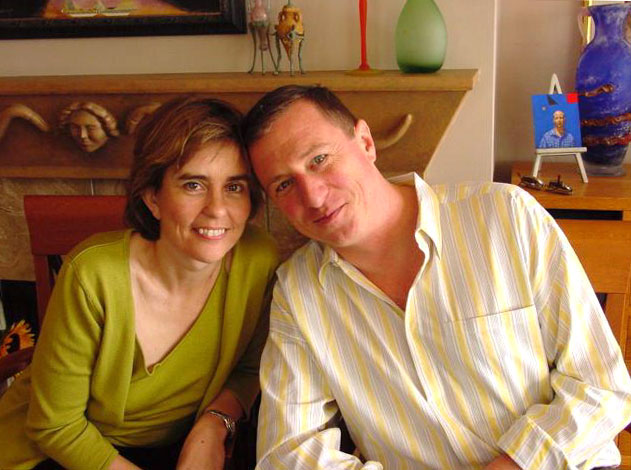
“Sharon Singer and Sam Singer. Tribal and Oceanic Art Collectors”
TM: How long have you been collecting, and how did you begin?
SAM: Sharon started collecting first, about 15 years ago, a lot of textiles and rugs. She became fascinated by it. Then she got me interested in it. We started going to the Caskey-Lees shows in San Francisco, both the Asian show and the Tribal show. Over the last 8 to 10 years we have been collecting tribal art objects. Sharon still has a great interest in textiles. She has a great eye and is quick to see things that are beautiful. It is fun to wander around with her and see things through her eyes as well as mine.
SHARON: When I think about how I came to be so drawn to tribal art, I usually think about my childhood. My father is an economist who wrote his dissertation on the economies of Latin America, and my entire family spent a year traveling in Latin America while he did his major research. We spent months in Santiago , La Paz , Caracas , and Lima , and in each of those places the culture, the values, the esthetics were totally different from my childhood home in Palo Alto . I think I was most moved by the ruins we visited in Cuzco . Although I was only 8 years old at the time and don’t remember the experience as clearly as I’d wish, I think it had a large impact on me.
TM: Your home is the perfect setting for the art, was this intentional?
SAM: We initially had a little house near my parents just a couple blocks from here. As we started to really like tribal art the house began to get packed with things. We were fortunate because we looked around the neighborhood and this house came up. We really like modern homes. This is a mid-century home built in 1950 by an architect named Robert Radcliff who is the son of the famous Walter Radcliff. Our house has been photographed for a book coming out on Radcliff homes. We wanted to find a house where the art fit nicely. This is a good contrast between tribal art and modern architecture. When we walked in the door and saw the space, it is almost built for a gallery space, we said WOW this is where we want to be able to live and this is the perfect place for our art and our kids and just to hang out.
We work really hard, we are “working stiffs” who are addicted to tribal art. Our money goes to pay for the kid’s high school and college and for art basically because it is really fun for us. It is a neat house because it has got great open space like a gallery and great wall space. Because of all the windows it is hard to tell where the house ends and the yard or exterior begins. On one side of the house it’s as if you are in a tree fort; the other side looks like your backyard is part of the front room! So, it is a great expense but well worth trying to pay the mortgage every month (laughing).
It has been fun to display the art. During this years San Francisco tribal show we invited many of the art dealers over like yourself because we thought it would be fun for you to see our stuff. Obviously one of the great joys of being a collector of Tribal Art is to be able to look at it, to study it and that’s what Sharon and I really love. It must be very satisfying to be a dealer; to see other people love and enjoy your pieces and be able to see them in a different setting.
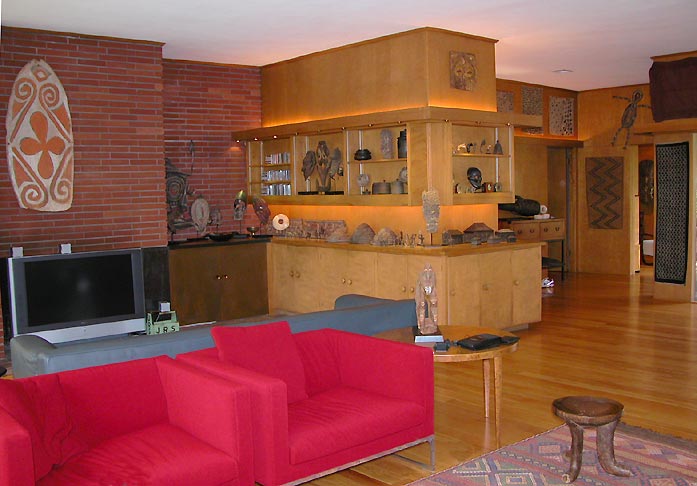
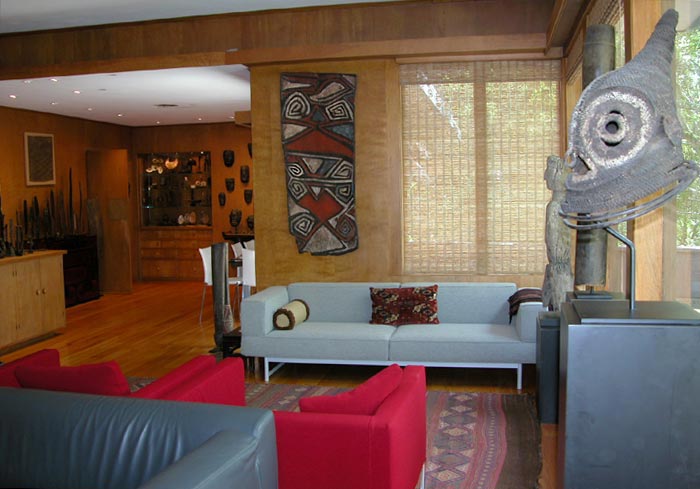
TM: What attracted you to Tribal Art as opposed to other forms of art or collectibles?
SAM: One of the things that we find attractive about Tribal Art is that it is very powerful. It has a combination of elements, the religious or communicative aspect of the pieces and the “Elegance and Menace” combination like the title of Michael Hamson’s book. Some of the pieces of tribal art are incredibly elegant and powerfully menacing all at the same time. That is something I think is really rare in art and is unfortunately missing from a lot of modern art, certainly the combination of elegance, relevance and power. I think that is what is fun about Tribal Art. In particular, to us New Guinea Art and Himalayan art does have the combination of elegance, relevance and power. The relevance portion being that to a tribe or particular group of people, the objects had great meaning or great relevance in their lives and culture. Its fascinating to be able to look at them and study them from a perspective of wanting to understand what someone else saw in them within the context of their culture. You think “my God that is an incredible piece of art– it is strikingly beautiful”.
Another thing that is interesting to look at are fragments, things that are distressed. Sometimes even more so, as a an object can be incredibly powerful even though it is missing pieces. Time and weather can’t strip the power and elegance out of these pieces.
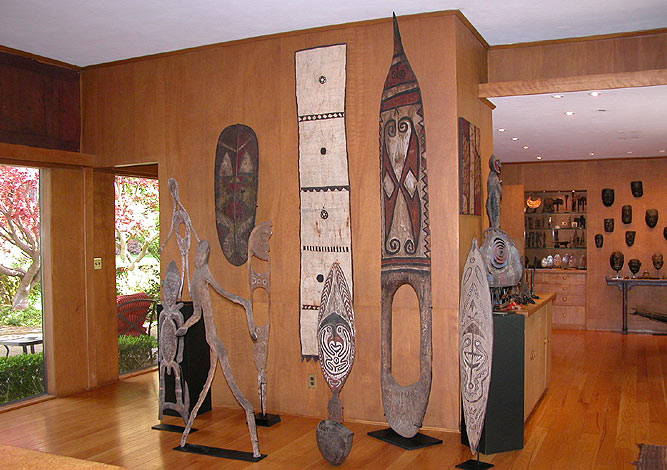
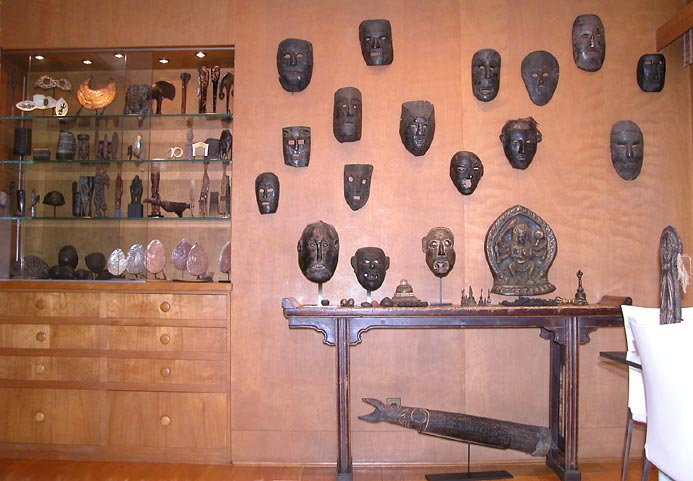
TM: Do you have differing tastes, and do you make collective decisions about the pieces to be added? Are you ever “at odds” about a prospective addition to the collection?
SAM: We both share this passion for collecting. I would say ninety percent of the time we come the collective decision that we really like a piece and want to have in our home or our office. It is most fun for us because we share in the desire to get things together that we both love. It is interesting, the ten percent of the time when we disagree, one person will say ‘that art work is so beautiful and so fabulous’ and the other person will say, nooo… I don’t think so, I’m not as interested in it and here’s why. We’ll get into a debate about why one likes it and the other doesn’t. What usually happens when we don’t equally love the piece, is either Sharon or I will buy it and the other one of us will shake their head and say ‘I don’t know about that’. In most cases after a period of time, the person who didn’t like the piece will come to love it– maybe even more than the person who purchased it originally and say ‘you know, that’s a really great thing’. There’s been times when Sharon has bought something and I’ll say, “you know, I don’t like that at all”. We’ll get it home and I’ll stare at it or maybe not pay attention to it for awhile. A year will go by and I’ll have looked at it for so long and I’ll say, ‘that’s the greatest thing I’ve ever seen and I can’t believe that I missed it’! Sharon will do that same thing too with something I wanted to purchase. I just takes awhile sometimes as a couple.
Sharon has a much better eye, I think, at instantaneously finding and seeing things of great beauty. I don’t always see it as quickly as she does so that is what makes it fun. One those things to do as “mates” is to be able to wander around and stare at and learn about things, talk with dealers, and to make decisions collectively. It is also fun to make decisions individually particularly when your mate looks at it long enough and then agrees it is a beautiful piece of art. I think that is gratifying and satisfying for both Sharon and myself.
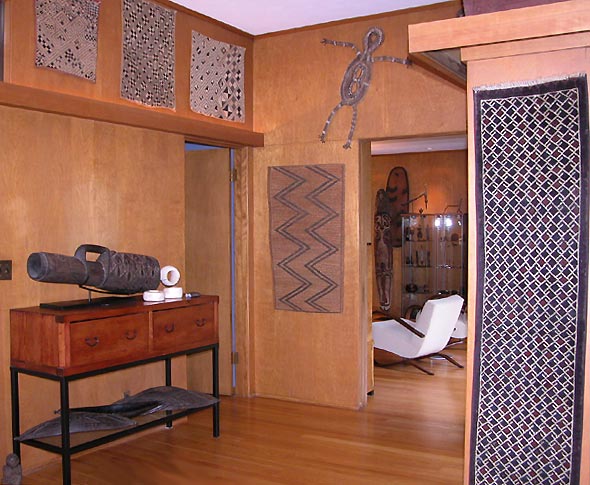
TM: What aspects of the various cultures represented amongst your pieces the are most attractive and important to you?
SAM: The characteristics that make New Guinea, Oceanic, Himalayan, Nepalese, and Tibetan art interesting to us are the connections we find, especially in their power and surreal elements. Take a look at this Asmat piece, probably the top of a “Bis pole”, his face looks very much like Edward Munch’s “The Scream”. Then look at the shields from the Highlands of New Guinea, which are wicked powerful things. Then the Shaman’s masks from the middle hills of Nepal are all so incredibly strong and have some surreal element that is almost inexplicable– so powerful that any of them could be paintings as much as masks.
Back to that issue of relevancy and soul. We love looking at modern art, and modern architecture a great deal. A lot of times Modern art is cold and stark. It gets some of its power from being cold and stark. The thing about tribal art is that it can also be simple or intricate, but has this important relevancy that modern art doesn’t have. It had significance within a culture. Whether it was an ancestor figure or a shield, it really meant something to the tribe. It is not just a random design, it is not just a couple colors slapped together. That symbolism was so relevant to them and it still is today. Whether you read about the tribes or simply look at it as a piece of art, you can see that the creator put a lot of thought into it because it had to be relevant within that group and serve form and function in order for it to have the “mana” or power that it deserved to have.
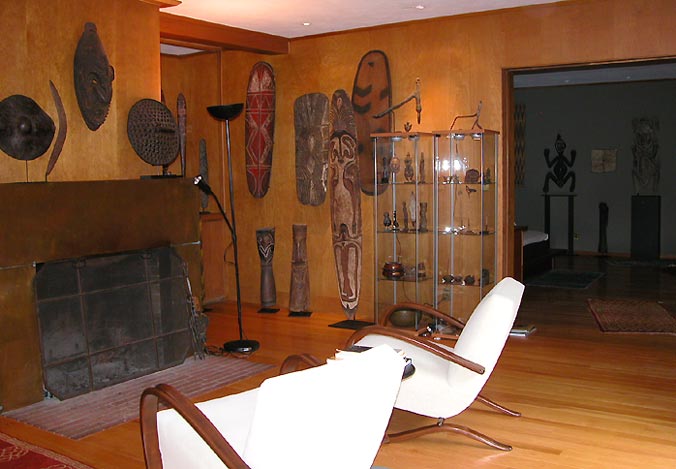
TM: What do you do for relaxation?
SAM: You know, we just love the stuff. The real treat when we’re finished doing work, is to be able to come home and stare at pieces. You never really grow tired of great pieces. For relaxation, its fun to surf websites like yours website Tribalmania, Hamson’s, and to look at the auction catalogs and books. We’re getting overrun with books, but you can’t have too many because you can learn so much. Friede’s book “Master pieces of New Guinea Art” is not only a delight for the eye with the pictures; but also exceptionally well written by the individuals that he selected. So, our relaxation is to be able to view our art and to go look at it on the web or in books and then sit and debate about it.
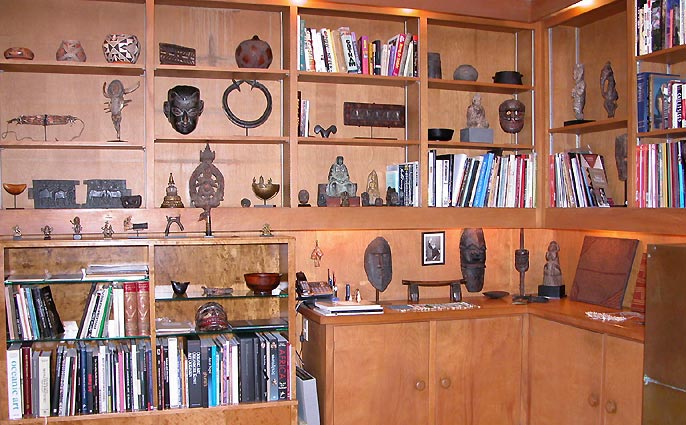
TM: Do you generally only acquire pieces that move you or do you ever buy with an eye to “round out” the collection? What criteria do you use for acquiring a new addition?
SAM: We’re fairly eclectic but I would say the number one thing that an artwork has to do is move us. It has to really hit you in the solar plexus, be beautiful, and be something we can’t live without. This is one of the most motivating, driving forces for us when we are out looking at things, finding something that is exceptionally beautiful and powerful. It’s funny, I would not know how to “round out” our collection if we tried. We just pick things up that we love. The big influences in our collection have been Michael Hamson and Oceanic Art and Bob Brundage when it comes to Himalayan Art. So, spending a great deal of time with them and sort of learning things from them has been very helpful to us. Being able to go to shows like the San Francisco and Asian show in New York, and seeing things first hand is so enjoyable. The most difficult thing is there are so many beautiful things, but you can’t afford to buy them all (laughter). It is both a blessing and a curse. It is a curse because it would be great to have everything you could possibly love. It is a blessing because it makes you think and be more selective when you don’t have endless deep pockets. It makes us think about what is powerful and meaningful to us as a couple.
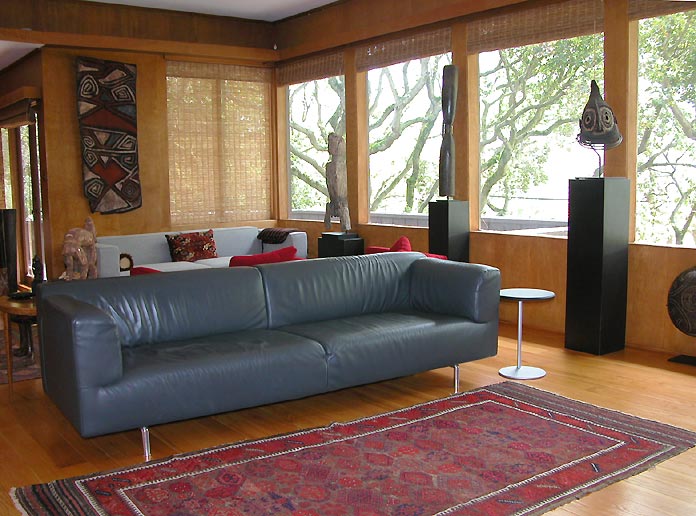
SAM: When we started off collecting as a couple 8 to 10 years ago we had very limited funds. We bought very price sensitive things we could afford that were from a couple hundred bucks to a couple thousand at most. That was a big stretch for us a decade ago. Over time, with the ability to earn a little bit more money, you’re able to afford more expensive things, but more expensive doesn’t necessarily make them better. Some of the things we bought a decade ago for a couple hundred bring us as just as much joy as something we’ve spent far more on. I think that is one of the things that is really great about going to the Tribal shows or visiting dealers websites is that you can see pieces, that are ,in the scheme of things, relatively inexpensive killer pieces of art that can bring great joy and pleasure to you.
We jokingly think of ourselves as “working stiffs”, but we are fortunate that we are in a field that allows us to have a nice home where we can display our art; to afford to buy beautiful art, send our kids to good schools to get good educations. I think one of the things that is attractive to us as Tribal Art collectors is that we both came from academic households. Sharon’s father was a professor of economics at Stanford, and my Mom and Dad were professors at U C Berkley. My mother was a psychology professor and my father was a physics professor. Education; learning about different and new things, asking challenging questions, debating, generally looking at all sorts of issues and problems from different perspectives was important to us in our family lives growing up. It is still important to us in our lives today. One of the fascinating things about Tribal Art is the ability to learn more about the artwork, the cultures, to debate the merits of pieces and to discuss our understandings of different cultures.
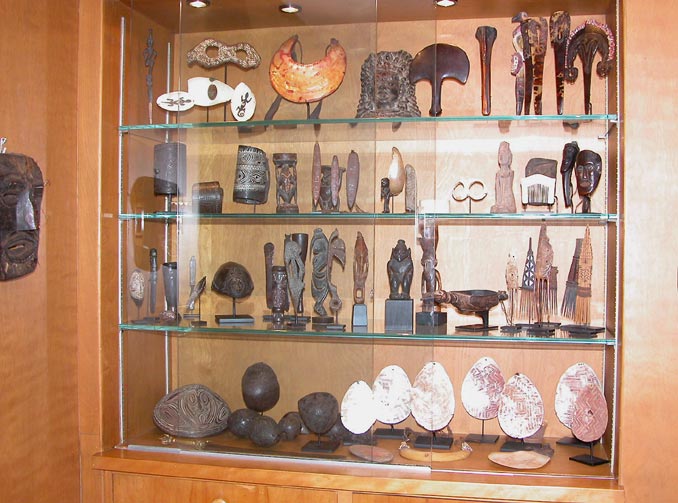
TM: Tell us about living day to day with the art in your environment; do you find a need to rotate the pieces?
SAM: This is a great house, I only wish there was more of it (laughing) because you eventually run out of display space for the art and shelf space for books and catalogs. I think where we are at now is there are so many pieces that we love, it’s hard to give equal space to them. We don’t want our things to be so crowed that you can’t enjoy looking at the pieces individually. We are thinking about taking some of the pieces out for awhile and putting them in a closet or drawer, in a loving manner just to make it a little less crowed, so the remaining art can be more enjoyed. We believe that it will also give us the opportunity to pull that drawer or closet open in 3 months or 6 months and rediscover how fabulous the things are. It will be like creating your own hidden treasure; you can spirit it away for awhile then take it back out and say how the hell could I put this away, it is so fabulous I’ve got to put it back out. This could occur again and again.
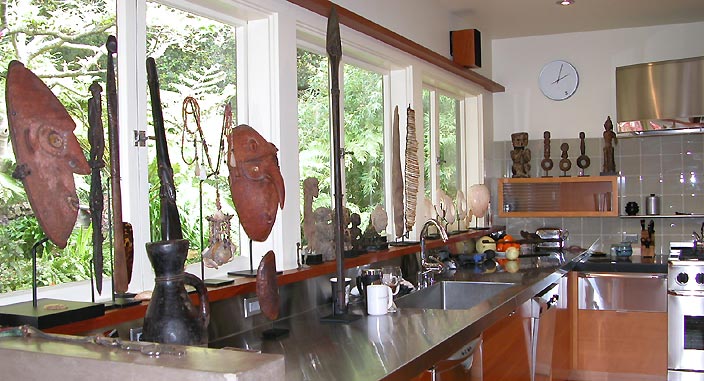
TM: You and Sharon are big fans of Tribal Art shows. Do you have a Favorite?
SAM: The two really–really killer showers in the world are the San Francisco Tribal Show (February) and the Parcours des Mondes in Paris (September). We wait all year for those shows to come around. What makes the San Francisco show so special is the blend of art work. There is a nice heritage of textiles in the San Francisco Bay area which I think overlaps nicely with Tribal Art objects. Of course, Paris is Paris and to be able to look at Tribal Art in the Saint-Germain-Des-Pres district and wander from little gallery to little gallery, then eat Duck Confit and have espressos is a pretty fabulous thing.
We went to Bruneaf once and really liked it, but since were not large collectors of African objects, it was not that fascinating for us. I would say 70 percent of Bruneaf is African. The only African we have are textiles that come from Clive Loveless. But Brussels is a fabulous town and there is so much to see even though African is not our thing. We still love to go learn, look and visit with the dealers.
SAM: If we can sneak away, we’ll go to the New York Tribal show which is a very good show, because New York is like the center of the world, they say if you can make it there you can make it anyway. It is interesting, though because the New York show can either be a hit or a miss. It can be a hit because there is an energy in New York, the dealers and collectors can wind up sharing that energy making a killer show. If the collectors are not as turned on or interested for some reason or another, the show does not have the power it ought to, through no fault to the dealers, however. You live a charmed life if you’re addicted to Tribal Art and can get to see all four shows in year.
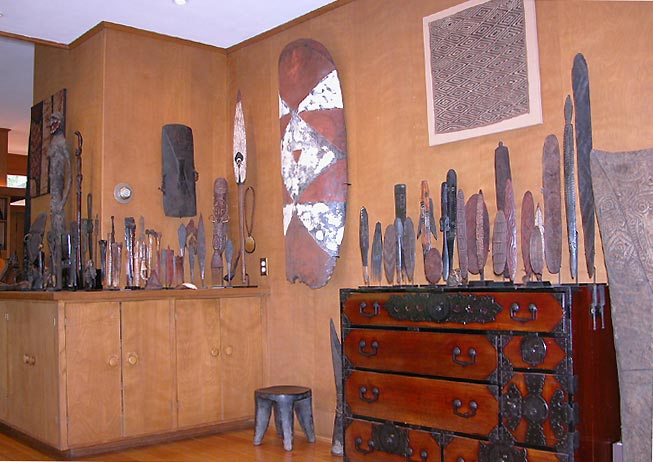
TM: Do your kids and family share your interest in Tribal Art?
SAM: Not as much as Sharon and I do. Our twin 15 year old boys, are not as interested in the intricate details or cultures as much we are. It is probably one of the those things which every teenage kid has with their parents where they are interested in it but at the same time slightly separate from it. The true sign of their interest in it is when we leave the room and they have some of their pals over. Their friends will say “Jeez, this is some really weird stuff your parents have”. Our kids will start to explain it to them, “Oh yeah, that over there is an Abelam piece and comes from New Guinea and Michael Hamson. Those Shaman’s masks are from the Himalayas and come from Bob Brundage”. So the kids may not be as fascinated in it as we are but they really pick up the culture, where the pieces are from, and the dealers they came from. It is fun for us to see that happening with them. When we first brought home that weathered Batak Singa over there, the kids said “Wow, that is really creepy”, but later they decided it was really cool. Over the years the boys have had history or cultural assignments in schools and have said “What should we write about”. Well, I said “heck look at all of the stuff around you”.
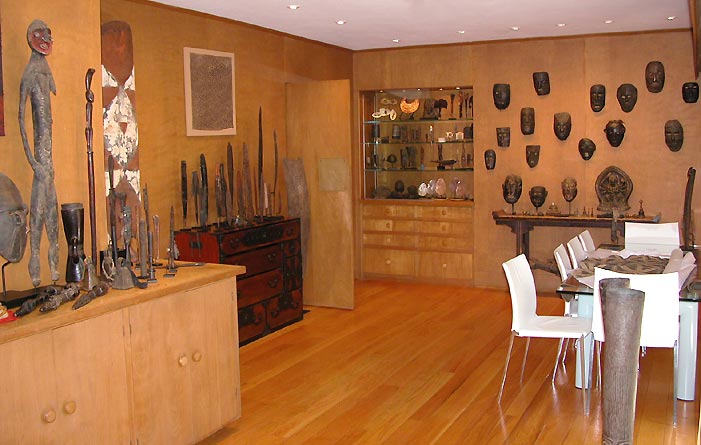
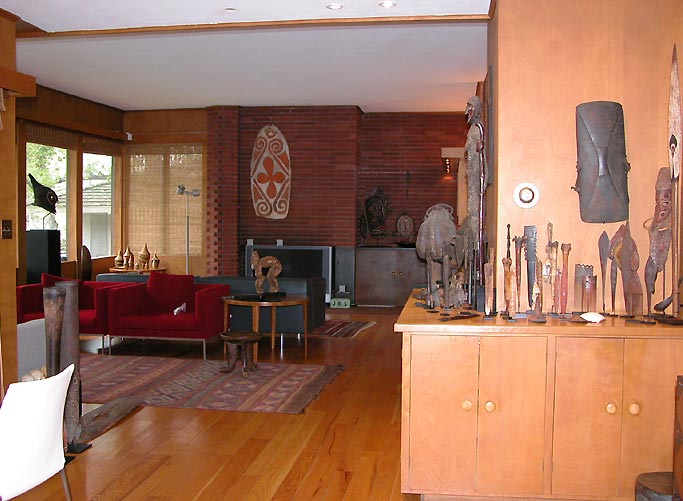
TM: Do you have a favorite piece?
SHARON: My favorite piece is a large Abelam figure that we bought several years ago from Michael Hamson. It’s illustrated in his catalog. When he brought it in it took my breath away—it’s the most beautiful piece of art I’ve ever seen. I see it each morning as I open my eyes and it continues to have a huge impact. It’s a large strong female figure, very powerful, with a great sense of serenity and a live three dimensional presence that fills the room.
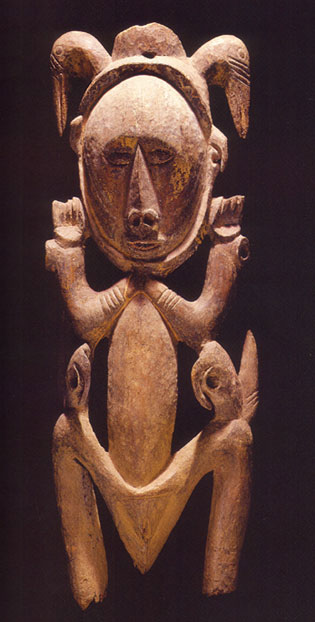
SAM: Oh, it is so hard to have a favorite piece. It is almost impossible. Well, I do have one piece that I think is one of my most favorite pieces of all. It is a very small figure that Michael Hamson field collected on “Ruprup Island” (Schouten). It is such an unusual thing; it really embodies everything that is beautiful, cool, elegant, and menacing about New Guinea Art. I’m nuts about it. In a certain sense it looks like universal Tribal Art. It is from New Guinea but has elements of African Art as well, in the legs and bottom. Other features like the face and ears bear resemblance to Indonesian as well. I’m sorry he is missing his penis there (laughing). It is such a cool thing.
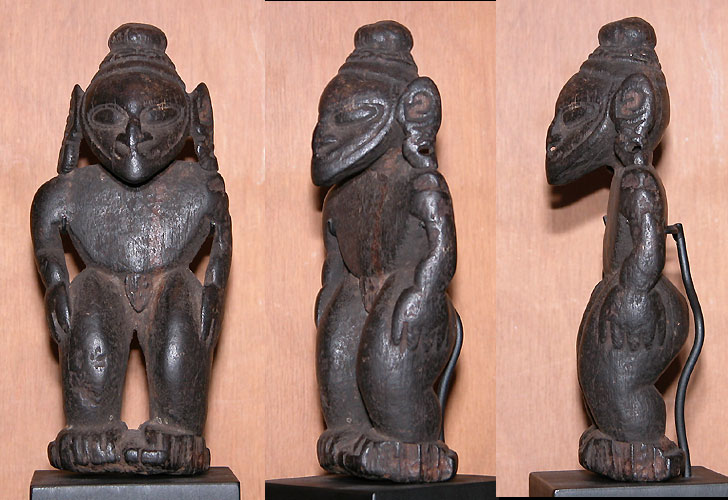
SAM: There is also a Himalayan mask that both Sharon and I really love that Bob Brundage field collected about 20 or so odd years ago. It is about dead center in the group and has a triangular face.
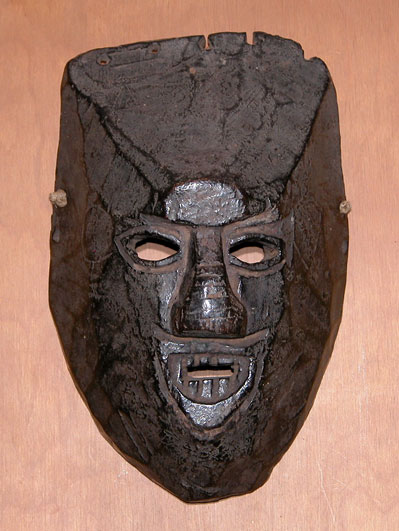
TM: What is your perspective or particular slant on the future of tribal art, from a collector’s standpoint?
SAM: We feel very fortunate that we started collecting a decade ago because beautiful things have gotten scarcer and they are always harder to find. We also feel fortunate that we love the art so much at a time where it has come to international prominence. With the opening of the De Young Museum in San Francisco and the Friede Collection it really put oceanic art, New Guinea in particular on an international level, a focus which it really has not enjoyed in the past, but certainly deserves to enjoy. With the reopening of the Metropolitan Museum’s Oceanic wing in a couple years, and the opening next month of the Quai Branly in Paris; the whole world on an international level is really starting to look at Tribal Art– “Art premier” in a completely different way.
If we were given three wishes, unlike most people it would not be to have the winning lotto numbers. For us it would be to go back in time and purchase things from dealers or out of auction catalogs (laughing), because if you go back in time, you see so many wonderful things that dealers have had, or pieces that had been in auctions. Things do pass through people’s hands, getting more expensive each time. Obviously the more beautiful they are the more expensive they are.
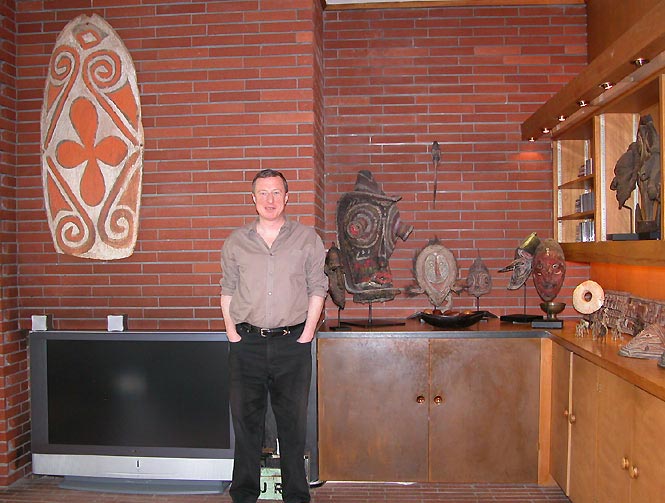
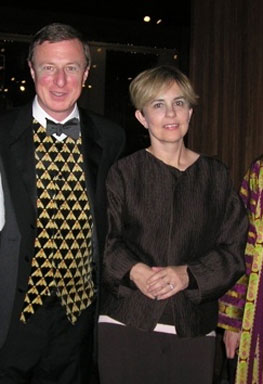
The Singers, Opening Night of the De Young Museum in San Francisco October 2005
Tribalmania extends its sincere gratitude and appreciate to Sam and Sharon Singer for offering their views. Thank you for sharing your time, home and collection.
